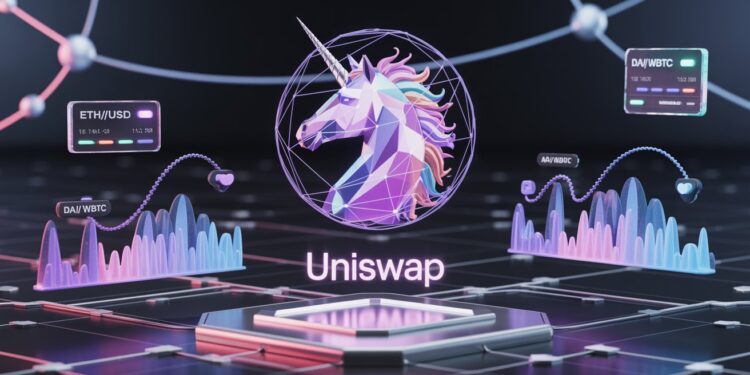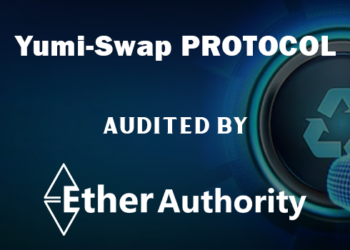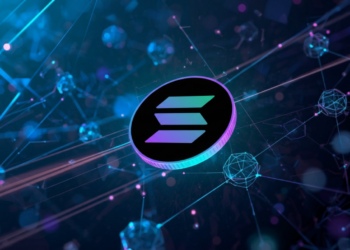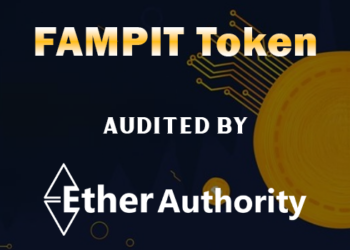In the constantly shifting environment of cryptocurrency and decentralized finance (DeFi), Uniswap stands out as a revolutionary force. Whether you’re a crypto newbie or a seasoned investor, understanding how Uniswap works is essential to navigating the decentralized economy of the future.
In this guide, we’ll break down what Uniswap is, how it works, and why it matters—all in a clear, human-friendly way.
What Is Uniswap?
Uniswap is a decentralized exchange (DEX) built on the Ethereum blockchain. Unlike traditional exchanges like Binance or Coinbase, Uniswap doesn’t rely on a central authority to manage trades. Instead, it uses smart contracts—self-executing code on the blockchain—to facilitate peer-to-peer token swaps.
Launched in 2018, Uniswap pioneered the Automated Market Maker (AMM) model, which allows users to trade tokens directly from their wallets without needing an order book or a middleman.
Key Features:
- No sign-ups or KYC: Anyone with a crypto wallet can use it.
- Non-custodial: You always control your funds.
- Permissionless: Anyone can list a token or provide liquidity.
- Open-source: The code is public and auditable.
How Does Uniswap Work?
At the heart of Uniswap is a simple but powerful idea: liquidity pools.
1. Liquidity Pools Explained
Instead of matching buyers with sellers, Uniswap uses pools of tokens. These pools are funded by users called Liquidity Providers (LPs) who deposit equal values of two tokens (e.g., ETH and DAI) into a smart contract.
When you trade on Uniswap, you’re not trading with another person—you’re trading with the liquidity pool.
2. The Constant Product Formula (x * y = k)
Uniswap uses a mathematical formula to determine prices:
$ x \cdot y = k $
Where:
- x = amount of Token A in the pool
- y = amount of Token B in the pool
- k = constant (remains unchanged)
This formula ensures that the product of the two token reserves stays constant. When you buy one token, its price increases slightly due to the reduced supply, creating a natural price curve.
What Are Liquidity Providers (LPs)?
LPs are the backbone of Uniswap. They deposit tokens into pools and, in return, receive LP tokens representing their share of the pool.
Why Become an LP?
- Earn trading fees: Every trade on Uniswap incurs a small fee (e.g., 0.3% in v2), which is distributed to LPs.
- Passive income: LPs earn a portion of the fees proportional to their contribution.
However, LPs also face impermanent loss, a temporary loss in value due to price fluctuations between the paired tokens.
Evolution of Uniswap: From V1 to V4
Uniswap has gone through several major upgrades, each improving functionality and efficiency.
Uniswap V1 (2018)
- Introduced the AMM model.
- Required ETH as an intermediary for all trades.
Uniswap V2 (2020)
- Enabled direct ERC-20 to ERC-20 swaps.
- Introduced price oracles and flash swaps.
Uniswap V3 (2021)
- Brought concentrated liquidity, allowing LPs to choose price ranges.
- Increased capital efficiency but also complexity and gas fees.
Uniswap V4 (2025)
The latest and most advanced version, Uniswap V4, introduces several game-changing features:
Key Innovations:
- Hooks: Custom logic for developers to build advanced DeFi apps.
- Singleton Contracts: Reduce gas costs by consolidating pools.
- Flash Accounting: More efficient transaction processing.
- Dynamic Fees: Adjusts fees based on market conditions.
- Native ETH Support: No need to wrap ETH into WETH.
- ERC-6909 Standard: Simplifies liquidity management.
These upgrades make Uniswap more flexible, cheaper, and developer-friendly than ever before.
How to Use Uniswap (Step-by-Step)
Using Uniswap is surprisingly simple. Here’s how you can get started:
Step 1: Get a Crypto Wallet
Install a wallet like MetaMask, Trust Wallet, or Coinbase Wallet.
Step 2: Fund Your Wallet
Buy ETH or any ERC-20 token and send it to your wallet.
Step 3: Visit the Uniswap Interface
Go to https://app.uniswap.org
Step 4: Connect Your Wallet
Click “Connect Wallet” and choose your provider.
Step 5: Swap Tokens
- Choose the token you want to swap.
- Enter the amount.
- Review the price and fees.
- Confirm the transaction in your wallet.
That’s it! You’ve just made a decentralized trade.
Why Uniswap Matters
Uniswap isn’t just a trading platform—it’s a cornerstone of DeFi. Here’s why it’s so impactful:
1. Financial Inclusion
Anyone with internet access can trade or earn without needing a bank.
2. Censorship Resistance
No central authority can block or reverse transactions.
3. Innovation Hub
Developers can build on top of Uniswap using its open-source code and smart contracts.
4. Token Discovery
New projects can list tokens without needing approval, fostering innovation.
Common Terms You Should Know
| Term | Meaning |
|---|---|
| DEX | Decentralized Exchange |
| AMM | Automated Market Maker |
| LP | Liquidity Provider |
| Slippage | Difference between expected and actual trade price |
| Impermanent Loss | Temporary loss due to price divergence in a pool |
| Gas Fees | Transaction fees on the Ethereum network |
Is Uniswap Safe?
Uniswap is considered one of the safest DEXs due to its open-source code and strong community. However, risks still exist:
- Smart contract bugs (though rare)
- Scam tokens (anyone can list a token)
- Impermanent loss for LPs
Always double-check token addresses and use trusted wallets.
Using Uniswap offers many benefits, but it also comes with several risks that users should be aware of before trading or providing liquidity. Here’s a breakdown of the main risks:
Key Risks of Using Uniswap
1. Impermanent Loss
When you provide liquidity to a pool, the value of your assets can diverge from simply holding them due to price fluctuations. This is called impermanent loss, and it becomes permanent if you withdraw your funds when the price difference is significant.
2. Smart Contract Vulnerabilities
Uniswap is built on smart contracts. While its code is audited and widely used, bugs or exploits in the contract could lead to loss of funds. This risk increases with newer or unaudited tokens and third-party integrations.
3. Scam or Fake Tokens
Anyone can list a token on Uniswap. This means malicious actors can create fake tokens with names similar to legitimate ones to trick users. Always verify token contract addresses before trading.
4. High Gas Fees
Uniswap operates on the Ethereum network, which can experience high gas fees during periods of congestion. This can make small trades uneconomical or cause failed transactions if gas limits are too low.
5. Front-Running and MEV (Miner Extractable Value)
Because transactions are public before they’re confirmed, bots can front-run trades—placing their own transactions ahead of yours to profit from price changes. This can lead to worse prices for your trade.
6. Price Slippage
In low-liquidity pools or large trades, the price you get may differ significantly from what you expected. This is known as slippage, and it can lead to unexpected losses.
7. Regulatory Uncertainty
As decentralized finance grows, regulatory scrutiny is increasing. Future regulations could impact how Uniswap operates or how users interact with it, especially in certain jurisdictions.
8. Loss of Private Keys
Since Uniswap is non-custodial, you are responsible for your wallet and private keys. If you lose access to your wallet, there’s no way to recover your funds.
How to Mitigate These Risks
- Double-check token addresses on trusted sources like CoinGecko or CoinMarketCap.
- Use hardware wallets for better security.
- Start with small amounts when testing new pools or tokens.
- Monitor gas fees using tools like Etherscan or GasNow.
- Stay informed about updates to Uniswap and Ethereum.
The Future of Uniswap
With the launch of Uniswap V4, the platform is poised to remain a leader in the DeFi space. Its focus on lower fees, developer tools, and user experience makes it a strong contender for mass adoption.
As Ethereum continues to scale and Layer 2 solutions grow, Uniswap’s role will only become more central in the decentralized economy.
Final Thoughts
Uniswap has redefined how we think about trading, investing, and building in the crypto world. By removing middlemen and empowering users, it has opened the door to a more inclusive and innovative financial system.
Whether you’re looking to swap tokens, earn passive income, or build the next big DeFi app, Uniswap is a platform worth exploring.
Join Us : Twitter | Website | GitHub | Telegram | Facebook | YouTube























